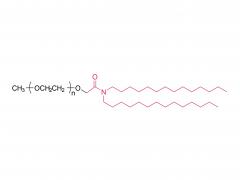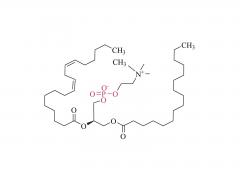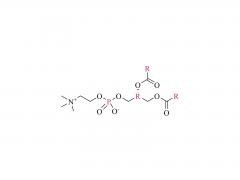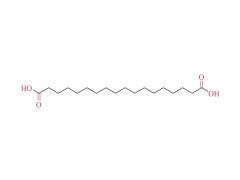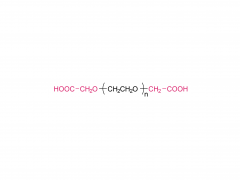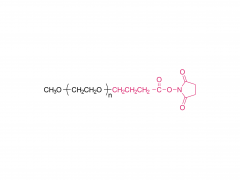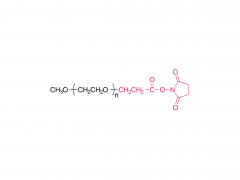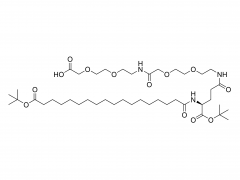Chemical structure and properties
1. Chemical composition
mPEG-N3 is a functionalized polyethylene glycol (PEG) derivative whose structure consists of two parts:
Methoxy (-Och-₃) -modified PEG chain: gives the molecule good water solubility, stability, and biocompatibility.
Azide groups (-N₃) : As highly reactive functional groups, they participate in click chemical reactions (such as CuAAC) and react specifically with alkynyl (-c ≡C-) compounds to form a stable 1,2, 3-triazole ring.
2. Physical properties
Water solubility: The hydrophilicity of PEG chain makes it easily soluble in water and some organic solvents (such as DMSO, DMF), which is suitable for application in biological systems.
Stability: The PEG chain is stable under physiological conditions, and the azide group is stable under dry and light-resistant conditions, but it may be hydrolyzed in wet environments.
Reactivity: The azide group can react efficiently with the alkyne group under mild conditions (room temperature to 37 ° C, pH 7.2-8.5) without catalyst.
Application field
Because of its unique reactivity and biocompatibility, mPEG-N3 has a wide range of applications in biomedicine, materials science and other fields:
1. Drug delivery and controlled release system
Targeted drug carrier: mPEG-N3 is combined with acetylene-modified drugs or targeted molecules through click chemistry to build a delivery system such as nanoparticles and liposomes to extend drug cycle time and improve targeting.
Controlled release materials: Used in smart drug delivery systems to control drug release through external stimuli (e.g., pH, temperature).
2. Biological coupling and labeling
Protein/antibody modification: Conjugated to an acetylene-modified protein or antibody to improve its stability, solubility, and biocompatibility and reduce immune response.
Nucleic acid labeling: used for the PEG-modification of oligonucleotides to enhance the anti-degradation ability of nucleic acid molecules.
3. Nanomaterials modification
Surface functionalization: Modify the surface of nanoparticles, gold nanorods and other materials, improve biocompatibility and stability, and reduce protein adsorption.
Targeted delivery: Coupling targeted molecules (such as antibodies) to build nanocarriers for gene therapy or tumor targeted therapy.
4. Biosensing and imaging
Sensor construction: Combined with alkynyl modified sensor molecules to improve detection sensitivity and specificity.
Imaging probes: Modify fluorescent dyes or magnetic nanoparticles for biological imaging (e.g., MRI, fluorescence imaging).
5. Tissue engineering and hydrogels
Hydrogel crosslinking: A stable network of hydrogels is formed by clicking chemistry with an alkynyl crosslinking agent for cell culture or tissue repair.
Bioactive molecular immobilization: Immobilization of growth factors or antibodies that enhance the function of materials in tissue engineering.
Value of medical research
1. Drug development
Antibody conjugated drugs (ADCs) connect antibodies to small molecule drugs to increase potency and reduce toxicity.
Predrug modification: Pegylation improves pharmacokinetic properties and prolongs action time.
2. Diagnostic tools
Molecular probes: Used for tumor labeling or inflammation imaging to improve diagnostic accuracy.
Biosensors: Detect biomarkers (e.g. glucose, protein) for disease surveillance.
3. Medical equipment modification
Surface coating: modifies catheters, heart stents, etc. to reduce blood clots and inflammatory reactions.
Antibacterial material: Construct antibacterial surface to inhibit biofilm formation.







